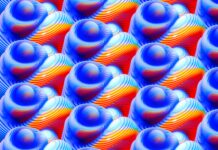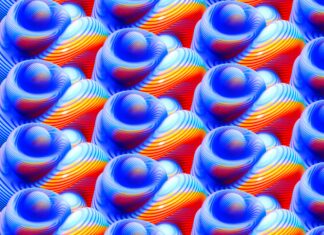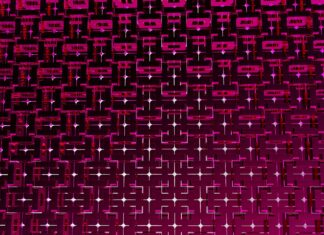Synthetic Biology: Engineering Life for Innovation and Impact
Synthetic biology is a cutting-edge interdisciplinary field that merges principles from biology, engineering, and computer science to design and construct new biological systems or modify existing ones. At its core, synthetic biology seeks to treat biological organisms as programmable entities, akin to engineering components, with the aim of creating novel functionalities, addressing challenges in various domains, and advancing our understanding of life’s fundamental processes. By reimagining biology as a platform for engineering, synthetic biology holds immense promise for revolutionizing industries ranging from healthcare and agriculture to energy and environmental conservation. This article delves into the captivating world of synthetic biology, exploring its foundations, applications, and the ethical considerations that accompany its rapid advancements.
In its essence, synthetic biology entails the deliberate engineering of biological systems through the integration of genetic information, biochemical reactions, and cellular processes. This field emerged as a natural extension of genetic engineering, embracing a broader perspective that encompasses not only the manipulation of individual genes but also the assembly of complex genetic circuits and entire biological pathways. Synthetic biologists employ standardized genetic parts, such as promoters, genes, and terminators, akin to building blocks, to construct functional genetic circuits that can regulate cellular behavior in a precise and predictable manner. By introducing these engineered circuits into host organisms, researchers can endow them with novel traits, behaviors, or functions that were not naturally present. This approach has enabled the creation of microorganisms that can produce biofuels, bacteria that produce insulin, and even organisms that exhibit logic-gate-like behaviors.
The applications of synthetic biology are as diverse as they are promising. One of the most notable areas of impact is healthcare, where synthetic biology is propelling advancements in diagnostics, drug production, and personalized medicine. Scientists are engineering cells to act as diagnostic sensors, detecting specific molecules indicative of diseases, and generating visible outputs, thereby revolutionizing disease detection. Furthermore, synthetic biology has enabled the production of complex therapeutic compounds through engineered microorganisms, offering a cost-effective and scalable solution for drug manufacturing. Personalized medicine, an emerging frontier, envisions tailoring treatments to an individual’s genetic makeup, and synthetic biology’s ability to reprogram cellular functions makes it a pivotal player in realizing this vision.
The realm of agriculture also stands to be transformed by synthetic biology. The world’s burgeoning population necessitates innovative approaches to enhance crop yields and ensure food security. Synthetic biology offers the means to engineer plants that are more resilient to pests, diseases, and changing environmental conditions. Through the manipulation of plant genomes, researchers are developing crops with increased nutrient content, extended shelf life, and higher tolerance to stress. These modifications not only address food scarcity but also hold the potential to reduce the environmental impact of agriculture by minimizing the need for harmful pesticides and excessive resource consumption.
Energy production is another domain being reshaped by synthetic biology. As societies strive to transition towards sustainable energy sources, synthetic biology is contributing by facilitating the production of biofuels through engineered microorganisms. These microorganisms can convert biomass into valuable biofuels like ethanol and biodiesel, offering a renewable alternative to fossil fuels. Additionally, synthetic biology is driving innovations in bioremediation, wherein genetically engineered microbes are deployed to degrade pollutants and contaminants, aiding in environmental cleanup efforts.
While the prospects of synthetic biology are undeniably exciting, its rapid evolution also raises ethical and societal considerations. The deliberate modification of organisms’ genetic makeup and the creation of novel life forms prompt discussions about the potential consequences and ethical boundaries of such actions. There are concerns regarding biosafety, as engineered organisms could escape laboratory settings and interact with natural ecosystems, potentially leading to unintended ecological disruptions. Moreover, the equitable distribution of synthetic biology’s benefits and the prevention of its misuse require careful regulation and international collaboration.
In conclusion, synthetic biology embodies a paradigm shift in our approach to life sciences, offering a framework to engineer and manipulate biological systems for diverse applications. Through the fusion of biology, engineering, and computation, this field opens avenues for groundbreaking innovations across healthcare, agriculture, energy, and beyond. However, the transformative potential of synthetic biology is accompanied by ethical and regulatory challenges that demand thoughtful consideration. As scientific understanding and technological capabilities continue to expand, the responsible advancement of synthetic biology will play a pivotal role in shaping the future of various industries and the overall well-being of our planet.
In the intricate tapestry of scientific discovery and technological advancement, synthetic biology emerges as a brilliant thread woven at the nexus of life sciences, engineering principles, and the art of innovation. It beckons us to step beyond the boundaries of convention, inviting us to reimagine life itself as a canvas onto which we can paint novel functionalities and solutions to age-old challenges. This interdisciplinary realm tantalizes our intellect and fuels our curiosity, propelling us into uncharted territories where biology morphs into an engineering playground.
As the sun rises on the horizon of synthetic biology, its rays illuminate the intricate dance of molecules within the labyrinthine chambers of cells. Gone are the days when biology was solely a realm of observation and dissection. With synthetic biology, it metamorphoses into an arena of design and creation. Here, scientists wield genetic sequences as artists wield brushes, crafting intricate patterns that orchestrate the behavior of living organisms. These genetic sequences, like musical notes on a grand staff, harmonize to produce symphonies of life – each note, a gene; each movement, a cellular process.
Consider the microscopic inhabitants of this synthetic world: engineered microorganisms that serve as bioproduction factories. Their genetic makeup carefully tailored, they churn out valuable chemicals, fuels, and medicines with a precision that humankind could once only dream of. The once-elusive art of manipulating life’s intricate machinery is now a reality, enabling us to choreograph metabolic pathways with grace and accuracy. From the petri dish to the fermenter, these microorganisms dance to the rhythm of genetic code, a testament to our newfound ability to mold life’s building blocks.
But the story does not end within the laboratory walls. It ventures into fields where nature and culture intermingle. Agriculture, which has been humanity’s partner for millennia, finds itself enriched by the brushes of synthetic biology. Here, seeds are not just seeds; they are carriers of innovation. Genetic engineers weave resilience into their fibers, affording crops the fortitude to withstand pestilent invasions and unpredictable climates. The fields become a testament to the convergence of science and tradition, where age-old practices dance with the tune of molecular modification.
Then, the tendrils of synthetic biology reach into our medical tapestry. Diagnostic tools morph into biological marvels, as cells, once mere components of living beings, are repurposed to detect diseases with sensitivity beyond our predecessors’ imagination. Microscopic sentinels roam our bodies, sniffing out traces of anomalies before they materialize into threats. The fusion of synthetic biology and medical science, akin to alchemy, transmutes cells into emissaries of health, transcending the limits of our biological understanding.
Peering into the distant future, we glimpse the potential to forge organisms that defy the boundaries of nature. Bioengineers flirt with the concept of xenobiology, where organisms are fashioned from genetic alphabets foreign to Earth’s inhabitants. Such creations might redefine the spectrum of life itself, ushering in organisms that exist beyond the confines of Earthly biology. The pages of science fiction blur with reality as synthetic biology rekindles our dreams of life beyond our blue planet.
However, as with every artistic endeavor, the masterpiece of synthetic biology is not without its shadows. Ethical conundrums cast doubt upon the radiant landscape. The very act of sculpting life confronts us with philosophical questions that echo through the halls of morality. How do we define life when it is no longer constrained by the natural order? Where do we draw the line between manipulation and creation, between understanding and control? As we thread through these uncharted territories, we must tread cautiously, lest our creation become our reckoning.
Indeed, this is a story of human ingenuity, where science and engineering dance a duet that resonates across disciplines. It is an odyssey that transcends mere innovation, inviting us to weave the threads of life and technology into a new narrative. Synthetic biology is more than a discipline; it is a manifestation of our innate human spirit, the spirit that drove us to harness fire, to explore distant shores, and to touch the moon. It beckons us to not only observe the world but to shape it – to unravel the secrets of life’s intricate tapestry and, in doing so, to rekindle our awe for the cosmos and the living wonders it cradles.
In the intricate dance of scientific exploration, synthetic biology emerges as a mesmerizing partner, inviting us to a grand ball where biology, technology, and imagination swirl in an enchanting waltz. This ball is not confined to a single hall but stretches across diverse landscapes, from laboratories adorned with gleaming instruments to the vast expanses of nature itself. It’s a dance that defies boundaries, transcending the traditional demarcations between disciplines and paving the way for a harmonious symphony of creativity and innovation.
Consider for a moment the notion of life as a palette of colors awaiting the touch of a skilled artist. Synthetic biology is that artist, wielding the brush of genetic code to paint intricate patterns on this canvas. With each stroke of engineering precision, new shades emerge – shades that were once the preserve of nature alone. The canvas comes alive with organisms that hum with novel functions, behaviors, and traits. Like a master painter, synthetic biology transforms the mundane into the extraordinary, turning microorganisms into factories, plants into sensors, and cells into architects.
Venture into the laboratories where the hands of scientists, often gloved but always meticulous, manipulate genetic material with the precision of a watchmaker assembling gears. The DNA, a script of life, becomes the parchment upon which we inscribe our desires. It’s a symphony of letters – adenine, cytosine, guanine, and thymine – that we arrange into melodies of function. These letters, simple yet profound, form words of genetic code that whisper instructions to cells, guiding them to execute tasks that stretch the boundaries of what was once thought possible.
Zoom out from the laboratory, and the stage widens to encompass entire ecosystems. Synthetic biology is not confined to test tubes; it ventures into nature, working hand in hand with the environment. Ecologists and biologists collaborate to restore habitats and species that have suffered the wounds of human activity. Here, synthetic biology becomes a gardener, coaxing life back into barren landscapes, breathing vitality into dwindling populations. It’s a harmonious partnership between human hands and the rhythms of nature, an alliance that redefines our role from mere observers to stewards of life’s intricate web.
In this grand ball of discovery, synthetic biology partners with its cousin, bioinformatics, to compose the music of life. Computer algorithms and biological data dance together, unraveling the mysteries encoded within the genes. This partnership isn’t just a mere melody; it’s a symphony that harmonizes data from the genome, proteome, and beyond. It orchestrates our understanding of life’s intricate interplay, revealing how the strings of DNA pull the puppetry of existence. The dance of code and computation lays bare the intricacies of genetic networks, allowing us to predict, simulate, and eventually engineer life’s responses.
As the dance of synthetic biology unfolds, it doesn’t just create life; it forges connections. It bridges gaps between disparate fields, inviting physicists, chemists, and engineers to join the festivities. It’s a celebration of collaboration, where minds accustomed to different rhythms and movements find common ground on the dance floor of innovation. The language of molecules becomes a universal tongue, spoken by all who are captivated by the promise of reshaping the living world.
Yet, in this jubilant ballroom, shadows sometimes cast their spell. As we alter the genetic codes that underpin life, ethical quandaries surface like echoes in the night. Questions of ownership, consent, and responsibility emerge, demanding our attention amid the revelry. The dance of synthetic biology forces us to gaze into the abyss of our own potential, where the power to engineer life becomes both a blessing and a burden. As we shape life’s contours, we must also shape our moral compass to navigate this uncharted terrain.
In the end, synthetic biology is not just an endeavor; it’s an odyssey of the human spirit. It reflects our unyielding curiosity, our audacious creativity, and our relentless pursuit of knowledge. It’s a testament to the insatiable desire of Homo sapiens to understand, control, and transcend the natural world. In the grand tapestry of human history, synthetic biology is a vivid thread that ties together the ancient quest for knowledge with the modern tools of science and technology. It’s an affirmation that we are not mere spectators in the grand theater of life but active participants, shaping the narrative of existence with every step of the dance.





















